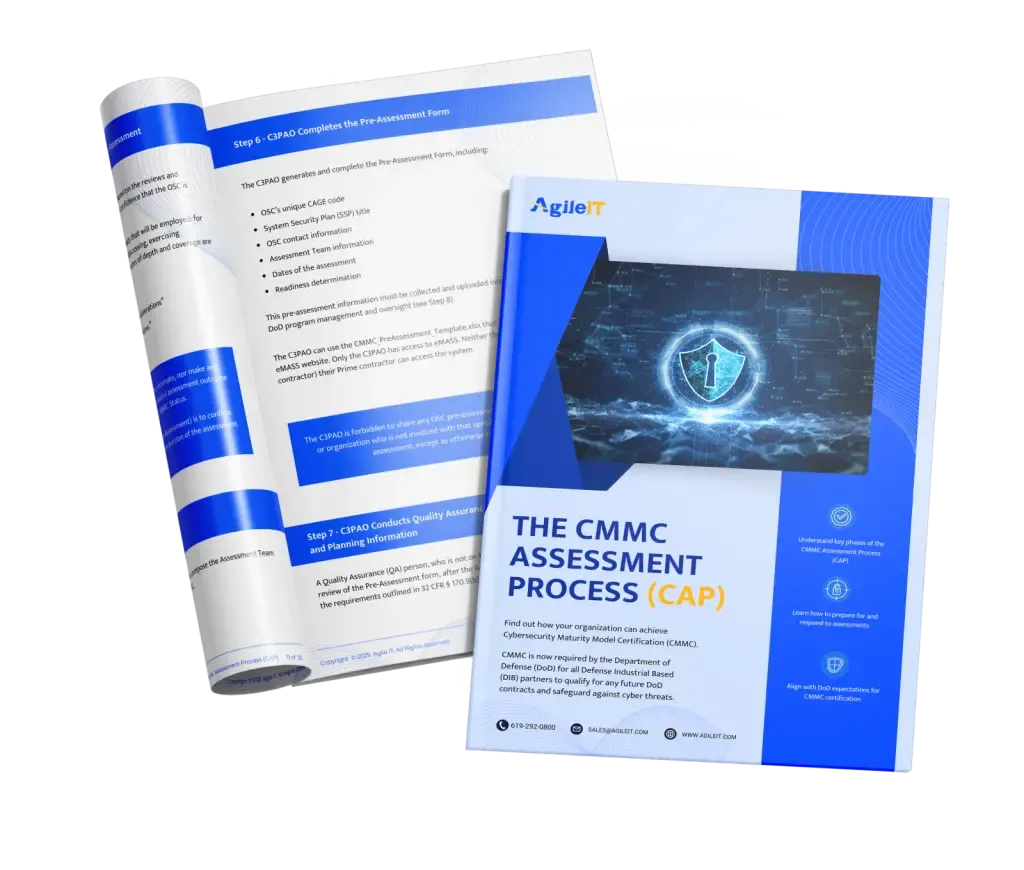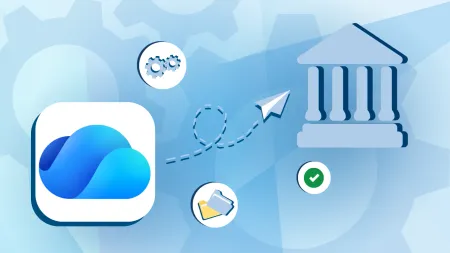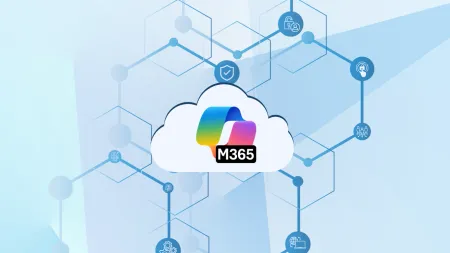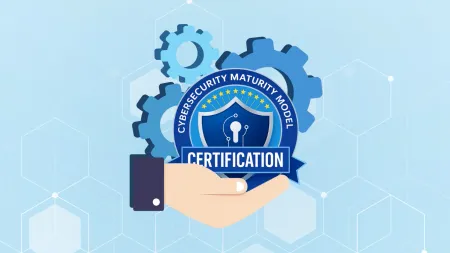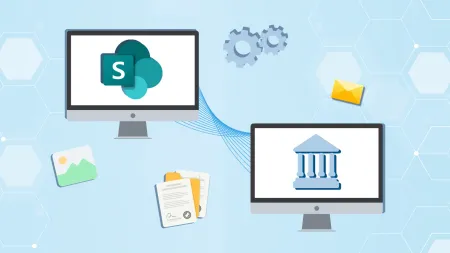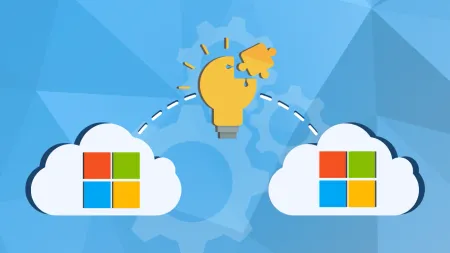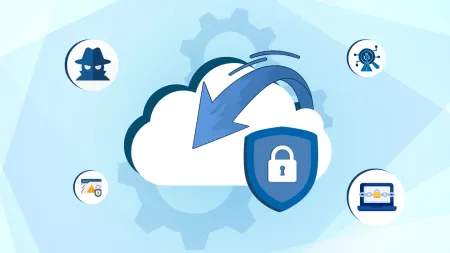Steps to Plan a Successful GCC High Migration
Learn the essential steps to plan and execute a successful Microsoft 365 GCC High migration—ensuring compliance, security, and operational continuity.

This is Post #2 of our GCC High Migration Planning & Readiness Series
Catch up on the first post and then finish the series:

As you continue the process of preparing to migrate from a Microsoft Commercial Tenant to GCC High, it is crucial that you take time to plan your migration thoroughly. The fact is that a migration of this nature can be extremely complex, and improper planning can lead to wasted resources, or worse, it could jeopardize the security of your sensitive data, including Controlled Unclassified Information (CUI). Before you even think about migrating data from your current cloud environment to GCC High, you should create a roadmap to ensure a successful migration. Yet, where do you start when creating your migration plan? Keep reading as we go over the steps that you should take when planning a successful GCC High migration.
Step 1: Define Business and Compliance Objectives
The first step is to determine what your compliance and cybersecurity objectives are, as this will help shape how you establish your new Microsoft tenant and the security measures you need to implement to ensure compliance. GCC High can play a critical role in helping DoD contractors protect their CUI and achieve compliance with regulations such as ITAR and CMMC 2.0 Levels 2 and 3. However, your specific compliance requirements will determine how you need to configure GCC High, making it essential that you determine your compliance needs and cybersecurity goals before you start planning your migration. This will help ensure that you take the proper steps during your migration to ensure compliance while storing or transmitting sensitive government data.
Step 2: Conduct an Environment Assessment
Once you’ve determined what your compliance goals are, your next step will be to assess your current cloud environment and catalog what data and services you will be migrating to GCC High. This can help you better understand and plan for the scope of your migration by giving you an idea of what services and data sets need to be migrated, and what will be involved in migrating this data securely. Analyzing your current infrastructure, including hardware, software, and data systems, can also help you identify potential challenges that may arise during the migration, such as compatibility issues, allowing you to prepare accordingly and make adjustments as you plan your migration. This can be essential in helping ensure the migration process goes as smoothly as possible. Assessing your current environment will also help you identify how many users you will be migrating to GCC High, which is critical to know when purchasing licenses.
Step 3: Determine Licensing and Eligibility
Next, you will need to start the validation process with Microsoft before you can purchase GCC High licenses. As we previously discussed in the last segment of this series, only eligible government organizations and contractors who handle sensitive government data, such as FCI and CUI, are allowed to purchase GCC High licenses. Fortunately, the validation process doesn’t have to be complicated or lengthy, as a Microsoft-approved AOS-G partner such as Agile IT can help determine your eligibility and help you navigate the validation process.
Once you are approved to purchase GCC High licenses, your next step will be to determine what type of licenses will work best for you and how many you need. Microsoft offers several GCC High licenses, and the one that will work best for you will depend on your security and compliance needs. Your migration partner can prove essential here by helping you determine which licensing types work for you. It is important to note that not all of your workforce needs to have same type of license. You should then take a moment to determine who has access to CUI and other secure data, as this can help you define the scope of your migration. Ensuring that only those who absolutely need to have access to CUI is not only essential for security purposes, but it can reduce migration costs by limiting the number of users migrating to GCC High.
Step 4: Build a Migration Plan and Timeline
Once you know what type of GCC High license (and how many) you need, you’re ready to start building your migration plan. Taking the time to develop a detailed migration plan outlining timelines, resource allocation, the type of migration strategy you plan to use, and specific steps for each phase of the migration is essential, as having a thorough migration plan in place will give you a roadmap to follow, which can help ensure the migration goes smoothly. A detailed roadmap and timeline, including all phases of the migration from assessment to post-migration support, ensures that all stakeholders know what is happening on what dates, and what their responsibilities are during each step of the process.
When planning your migration, it is also important that you incorporate data backups into your migration plan. Creating comprehensive backups of mailboxes, documents, and other critical data before you start the migration can ensure your critical data is still accessible should something unexpected happen during the migration. You should also back up all applications and ensure that they are compatible with the target environment, and you need to ensure that you have a rollback strategy in place in case you encounter issues with the migration.
Step 5: Plan to Execute the Migration in Phases
To help ensure a smooth migration, as well as to reduce downtime and user impact, you should consider using a phased approach when migrating to GCC High. The fact is that a phased rollout can help minimize risk by giving you better control over the rollout process, allowing you to identify and address potential issues before they impact your entire organization and lead to downtime or data loss. Start by migrating a pilot or test group, such as a single department, to GCC High to test the process and refine your migration plan. You can then migrate the rest of your organization in batches to ensure a smooth migration process.
Step 6: Test and Train
Once the migration to GCC High is complete, your job is not done, as there are critical post-migration steps you need to take to identify any remaining issues and ensure smooth operations in your new tenant. In particular, it is important that you provide comprehensive end-user training in order to help acclimate your team to the GCC High environment and ensure that they adopt proper security procedures (such as implementing MFA) to ensure compliance. You should also perform thorough testing to identify any issues that could arise, as well as to ensure all of your migrated data, applications, and services are operational in the new environment and meet necessary compliance standards.
Starting the process of migrating your team to GCC High can feel like an overwhelming prospect. The good news is that taking the time to develop and implement a comprehensive migration plan can help ensure this process goes as smoothly as possible. It is also essential that you partner with an experienced GCC High migration partner who can help streamline the migration process for you.
If you are starting the process of migrating to GCC High, consider talking to one of our GCC High migration experts at Agile IT to start your transition today.
